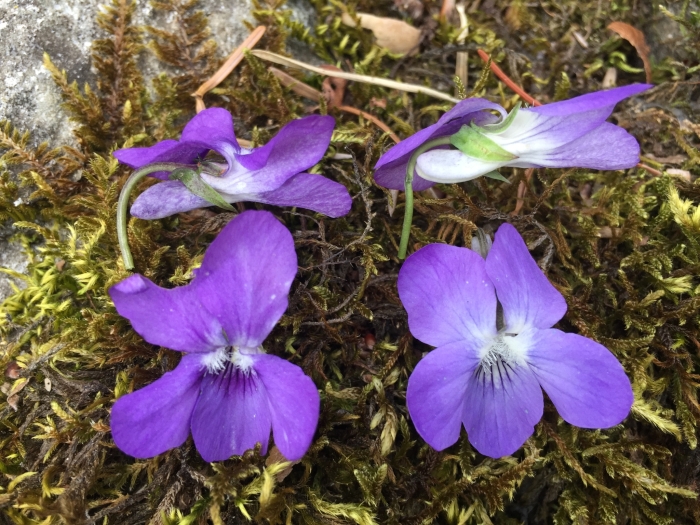Early Dog-Violet
(Viola reichenbachiana)
Early Dog-Violet (Viola reichenbachiana)
/
/

© Jason Grant
CC BY 4.0
Image By:
© Jason Grant
Recorded By:
Copyright:
CC BY 4.0
Copyright Notice:
Photo by: © Jason Grant | License Type: CC BY 4.0 | License URL: http://creativecommons.org/licenses/by/4.0/ | Uploader: jasonrgrant | Publisher: iNaturalist |



















Estimated Native Range
Summary
Viola reichenbachiana, commonly known as Early Dog-Violet or Pale Wood Violet, is a rhizomatous herbaceous perennial native to the deciduous woodlands, forest clearings, and shady hedge banks of central Europe and parts of Asia. It typically grows 2.0-5.9 inches tall and features heart-shaped leaves. The Early Dog-Violet is notable for its nodding, dull purple flowers with a pale throat, which bloom from late February to May and are subtly fragrant. While not as showy as some other violets, its flowers add a delicate charm to woodland settings.
This violet species is valued for its early spring flowers and its ability to naturalize in suitable conditions, making it a popular choice for woodland gardens, shaded borders, and naturalized areas. It prefers partial sunlight but can tolerate full shade, and it requires moderate watering with well-drained soil. Viola reichenbachiana is relatively low-maintenance but can be susceptible to predation by slugs, snails, and various insects. It is also used in traditional medicine and has culinary uses, with the flowers being edible and sometimes used as garnishes or in salads.CC BY-SA 4.0
This violet species is valued for its early spring flowers and its ability to naturalize in suitable conditions, making it a popular choice for woodland gardens, shaded borders, and naturalized areas. It prefers partial sunlight but can tolerate full shade, and it requires moderate watering with well-drained soil. Viola reichenbachiana is relatively low-maintenance but can be susceptible to predation by slugs, snails, and various insects. It is also used in traditional medicine and has culinary uses, with the flowers being edible and sometimes used as garnishes or in salads.CC BY-SA 4.0
Plant Description
- Plant Type: Herb
- Height: 0.25-0.5 feet
- Width: 0.25-0.5 feet
- Growth Rate: Moderate
- Flower Color: Purple
- Flowering Season: Spring
- Leaf Retention: Deciduous
Growth Requirements
- Sun: Part Shade
- Water: Medium
- Drainage: Medium
Common Uses
Border Plant, Butterfly Garden, Deer Resistant, Low Maintenance
Natural Habitat
Deciduous woodlands, forest clearings, and shady hedge banks in central Europe and parts of Asia
Other Names
Common Names: Pale Wood Violet
Scientific Names: , Viola reichenbachiana, Viola arenicola, Viola bertoti, Viola bertotii, Viola canina, Viola canina subsp. silvatica, Viola canina subsp. sylvestris, Viola canina subsp. sylvestris, Viola canina subsp. sylvestris
GBIF Accepted Name: